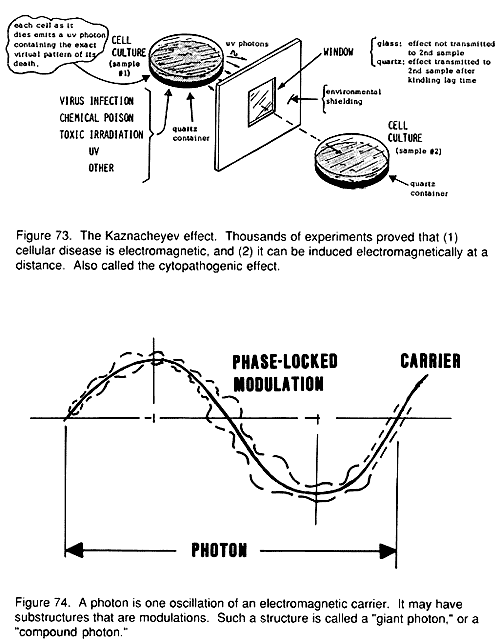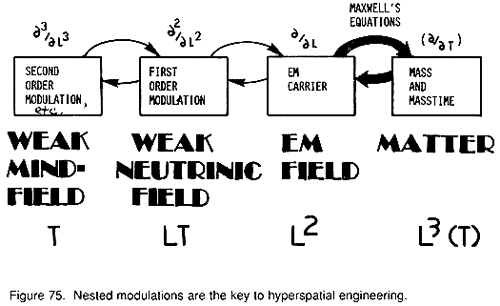from Chernier Website
Dr.
Vlail Kaznacheyev is Director of the Institute for Clinical and
Experimental Medicine in Novosibirsk. (VN: I believe that is in Russia)
For 20 years he has been directing highly unusual experiments with twin cell cultures. These experiments are vital to understanding disease and healing on a more fundamental basis than is presently utilized by orthodox medical science.
The
Kaznacheyev experiments (several thousand) in the Soviet Union proved
conclusively that any cellular disease or death pattern can be transmitted
electromagnetically, and induced in target cells absorbing the
radiation.
In the experiments, two sealed containers were placed side by side, with a thin optical window separating them. The two containers were completely environmentally shielded except for the optical coupling.
A tissue was separated into two identical samples, and one sample placed in each of the two halves of the apparatus.
The
cells in one sample (on one side of the glass) were then subjected to a
deleterious agent - a selected virus, bacterial infection, chemical poison,
nuclear radiation, deadly ultraviolet radiation, etc. This led to disease and
death of the exposed/infected cell culture sample.
If the thin optical window was made of ordinary window glass, the uninfected cells on the other side of the window were undamaged and remained healthy. This of course was as expected in the orthodox medical view. However, if the thin optical window was made of quartz, a most unexpected thing happened. Some time (usually about 12 hours) after the disease appeared in the infected sample, the same features of disease appeared in the uninfected sample.
This startling "infection by optical coupling" occurred in a substantial percentage of the tests (70 to 80 percent). From an orthodox medical view, these results were unexpected and unheard of.
Further, if the originally uninfected cells were in optical contact
with the infected cells for 18-20 hours or so, and then were correspondingly
exposed (optically coupled) to another uninfected cell sample, symptoms
of the infection appeared in this third sample an appreciable portion of the
time (20 to 30 percent).
Guided by A.G. Gurvitsch’s work that showed that cells give off mitogenetic radiation (photons) that can affect other cells, the Kaznacheyev team sought an answer by looking for photons given off by the infected culture sample as its cells died.
They found that the cells in the infected culture gave off photons in the near ultraviolet when they died. The normal window glass was opaque to these near-UV photons and absorbed them. In that case, the uninfected culture on the other side of the glass was not exposed to radiation by the UV "death" photons from the dying cells, and they remained serenely healthy.
However, the quartz window was transparent to the UV "death photons". When the quartz window was installed, the UV "death photons" passed through it and were absorbed in the uninfected culture on the other side of the window. Most of the time, the uninfected culture which absorbed "death photons" sickened and died with the same disease symptoms.
The Kaznacheyev experiments proved conclusively that cellular death and disease patterns can be transmitted and induced electromagnetically.*
* We point out that this effect has been investigated in both the infrared and ultraviolet. IR to UV may be taken as a single harmonic interval - an octave, musically speaking. The same effect can be reproduced in any other "octave" (single harmonic interval) of the electromagnetic frequency spectrum. The reversal of the effect can also be achieved in any harmonic interval. The mechanism for these effects involves the cellular biopotential, Popp’s master cellular control system, and the deterministically-tailored substructure of photons.
The article is reproduced in accordance with Section 107 of title 17 of the Copyright Law of the United States relating to fair-use and is for the purposes of criticism, comment, news reporting, teaching, scholarship, and research.


No comments:
Post a Comment